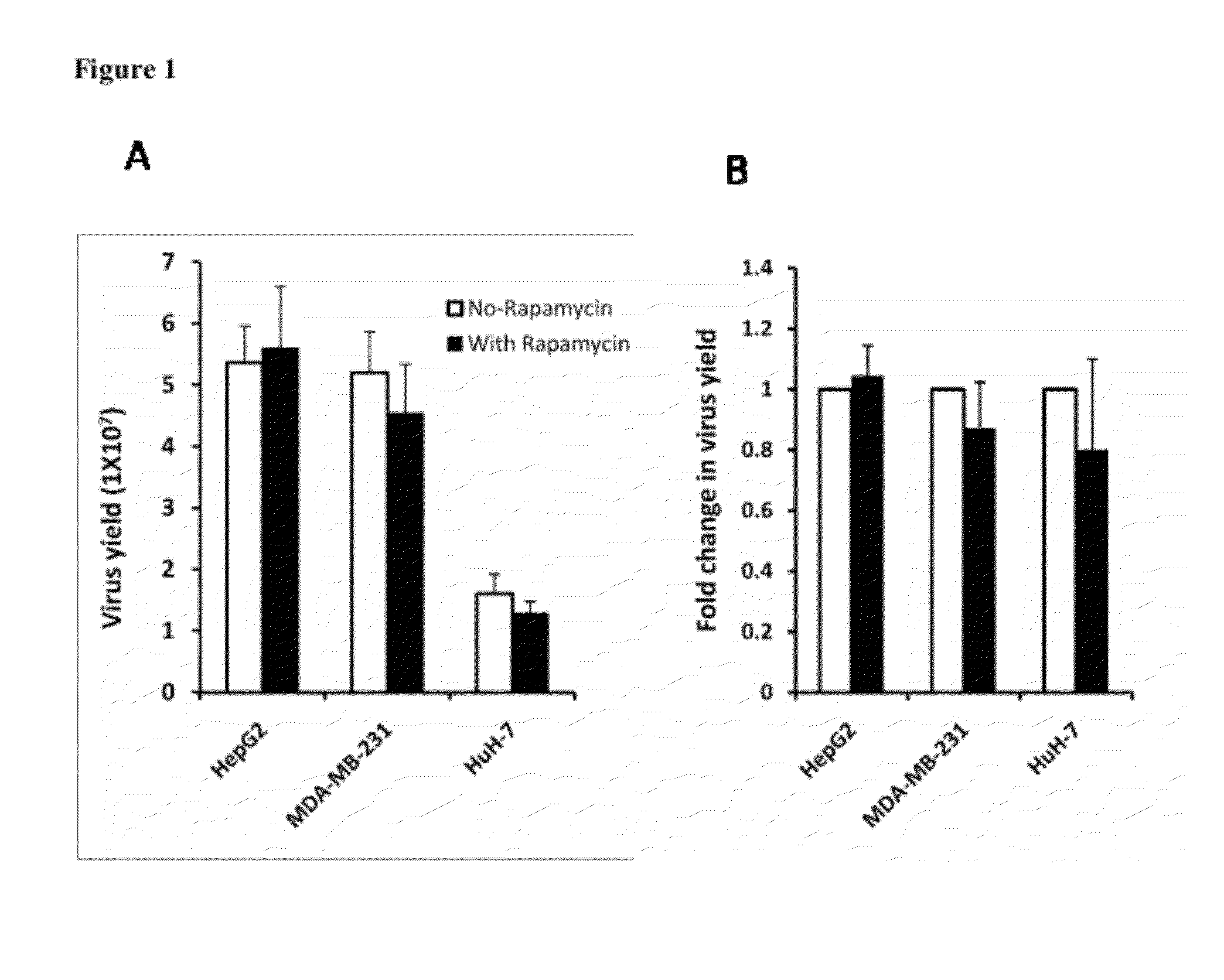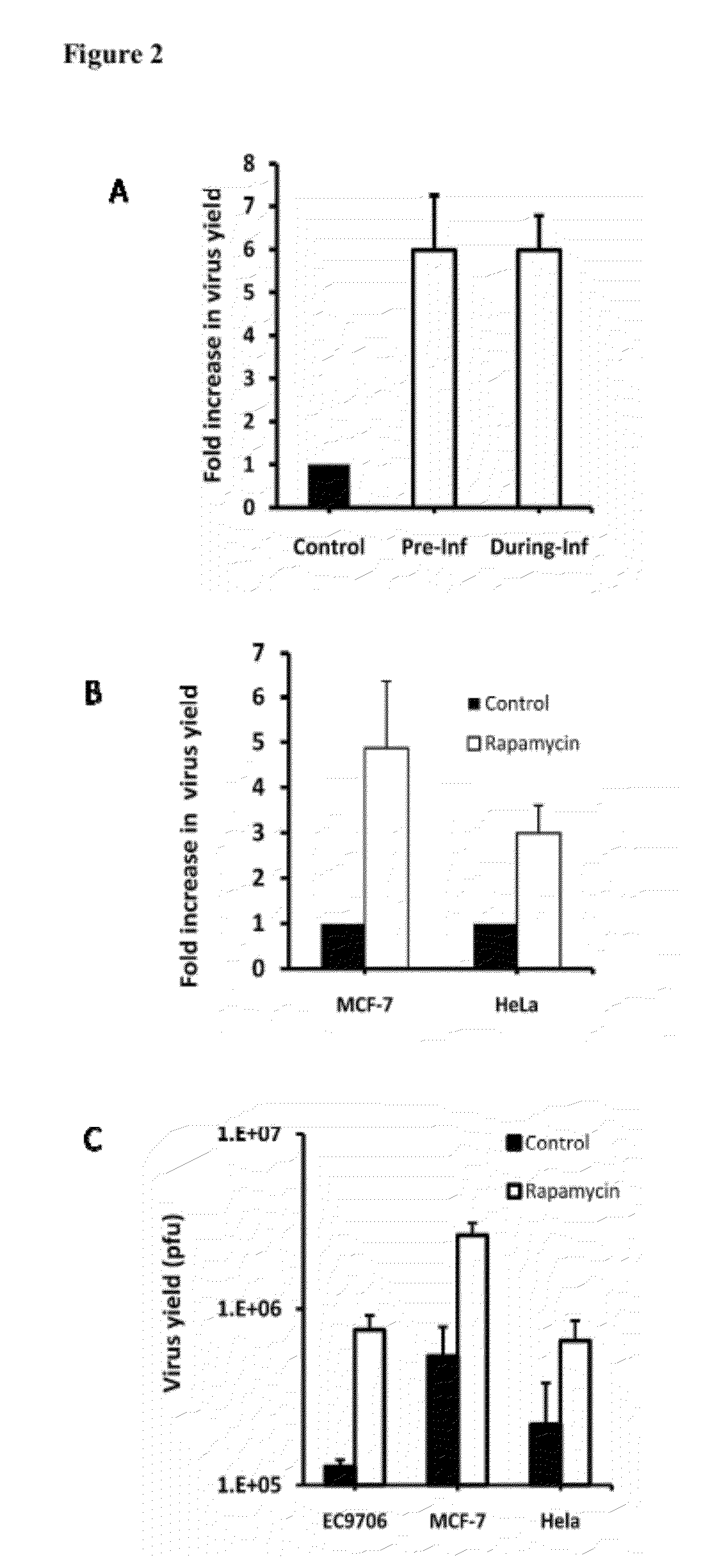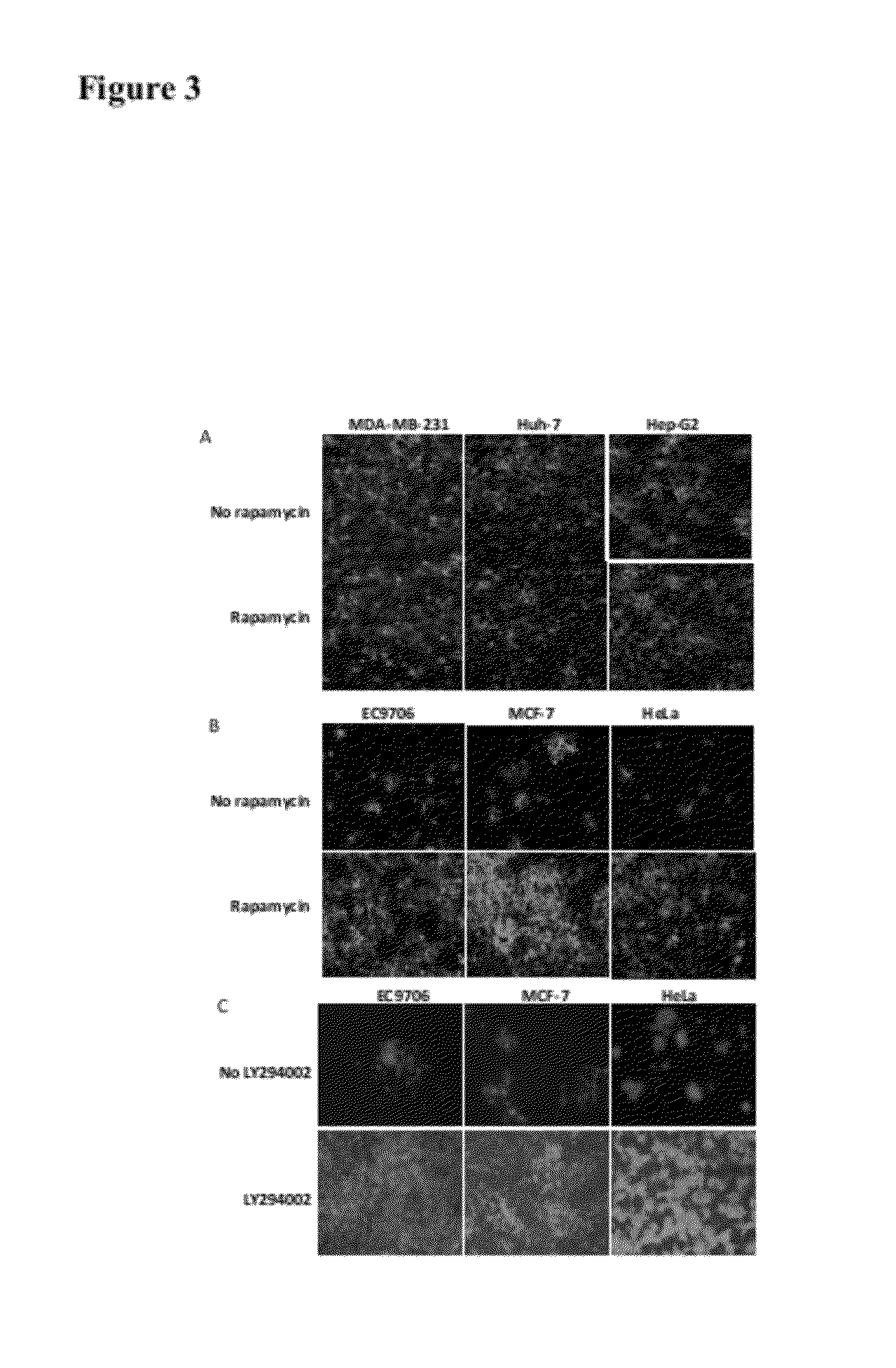Method for increasing the replication of oncolytic HSVs in highly resistant tumor cells using mTOR pathway and PI3K inhibitors
a technology of mtor pathway and pi3k inhibitor, which is applied in the direction of dsdna viruses, drug compositions, biocide, etc., can solve the problems of reducing hsv derived oncolytic viruses can not be easily replicated and spread in these tumor cells, and the components show little therapeutic effect, so as to improve tumor cell permissiveness, reduce treatment effectiveness in the clinic, and improve the prognosis of cancer patients
- Summary
- Abstract
- Description
- Claims
- Application Information
AI Technical Summary
Benefits of technology
Problems solved by technology
Method used
Image
Examples
example 1
[0022]Rapamycin enhances oncolytic HSV replication in tumor cells that do not fully support the virus growth. A. EC9706 cells were either preincubated with rapamycin overnight (Pre-Inf) or incubated with the drug during the virus infection (During-Inf). They were then infected with Baco-1 at 0.1 pfu / cell and for 72 h. Fold increase in virus yield was calculated by dividing the yield in the control well with that in the rapamycin treated well. Rapamycin was found to increase the yield of an oncolytic HSV by almost 6-fold. B. MCF-7 and HeLa cells were infected with Baco-1 at 0.01 pfu / cell for 1 h. Then the cells were cultured in medium without (control) or with rapamycin at a concentration of 100 nM for 72 h before harvesting for virus titration. Rapamycin was found to increase the yield of an oncolytic HSV by 3-5 fold. C. without the drug treatment, the yield of oncolytic virus in these resistant tumor cells was quite low (around 1×105 plaque forming units (pfu). In the presence of r...
example 2
[0023]Rapamycin promotes the spread of oncolytic HSV in semipermissive tumor cells and tumor cells that do not fully support the virus growth. Three permissive tumor cells (MDA-MB-231, Huh-7 and Hep-G2 cells) are infected with Baco-1 at 0.1 pfu / cell and incubated without or with rapamycin (100 nM). Micrographs taken at 48 h postinfection did not show any effect on the spread of Baco-1 in these permissive tumor cells. In the same experiment, three highly resistant tumor cells (EC9706, MCF-7 and Hela cells) are infected with Baco-1 at 0.01 pfu / cell and incubated without or with rapamycin at a concentration of 100 nM, or LY294002 at 50 μM concentration. Both rapamycin and LY294002 were found to dramatically enhance the spread of the oncolytic HSV (Baco-1) in all the three resistant tumor cells.
example 3
[0024]Rapamycin enhances the replication of several other types of oncolytic HSVs in tumor cells that do not fully support the virus growth. EC9706 cells were infected with three other types of oncolytic HSVs, including FusOn-H2 (an oncolytic HSV derived from HSV-2, while Baco-1 was derived from HSV-1) and Ape-Mir3 (an oncolytic HSV specifically targets to hepatocellular carcinoma), at 0.1 pfu / cell and then incubated with medium without or with rapamycin (100 nM) for 72 h before harvesting for virus titration. Rapamycin was found to increase the yield of these viruses by 3-10 folds in this highly resistant tumor cells.
PUM
| Property | Measurement | Unit |
|---|---|---|
| Electrical resistance | aaaaa | aaaaa |
| Therapeutic | aaaaa | aaaaa |
Abstract
Description
Claims
Application Information
 Login to View More
Login to View More - R&D
- Intellectual Property
- Life Sciences
- Materials
- Tech Scout
- Unparalleled Data Quality
- Higher Quality Content
- 60% Fewer Hallucinations
Browse by: Latest US Patents, China's latest patents, Technical Efficacy Thesaurus, Application Domain, Technology Topic, Popular Technical Reports.
© 2025 PatSnap. All rights reserved.Legal|Privacy policy|Modern Slavery Act Transparency Statement|Sitemap|About US| Contact US: help@patsnap.com



